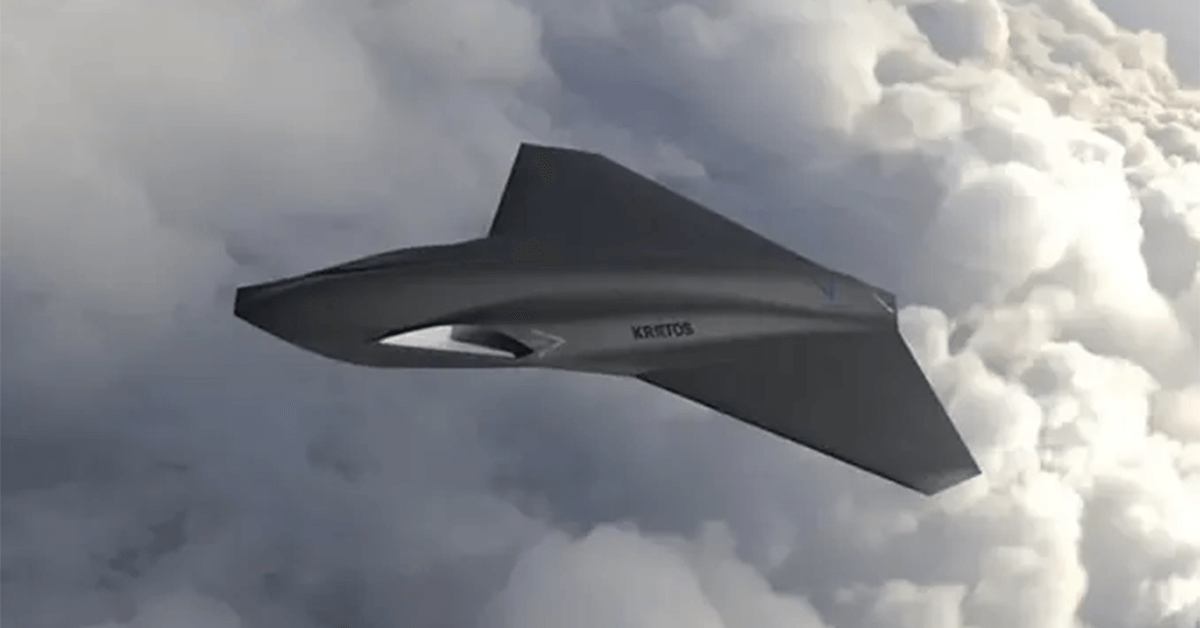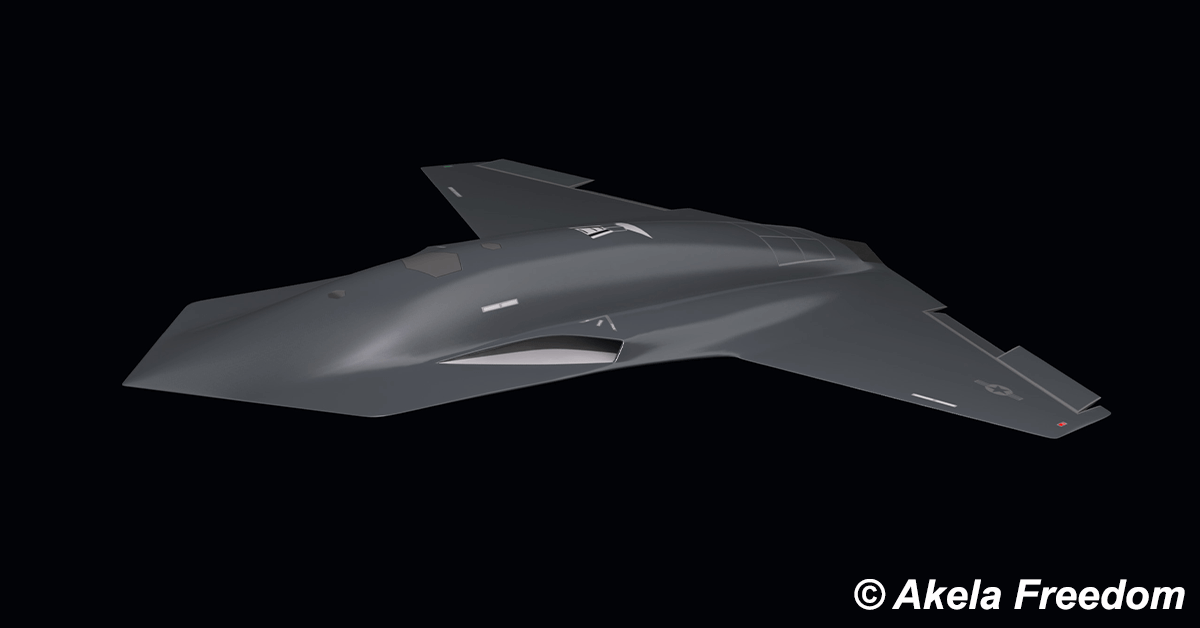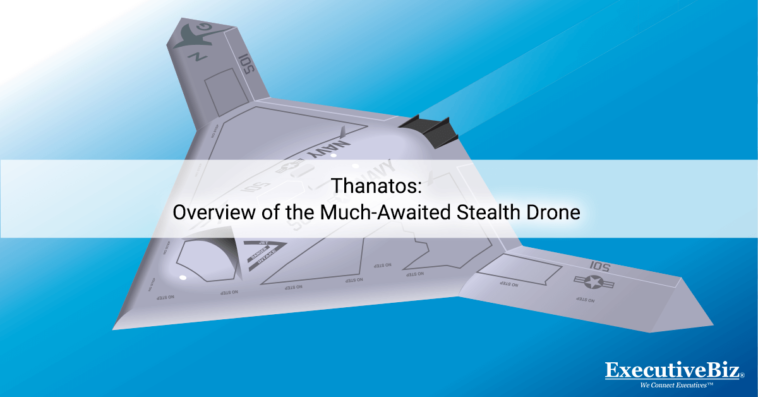Thanatos is a drone developed by Kratos Defense and Security Solutions. This isn’t just any ordinary drone. Its name, derived from the Greek personification of death, hints at its formidable capabilities.
Thanatos has been on the radar of tech enthusiasts and defense analysts since 2019. This November, in 2023, the veil of secrecy was finally lifted.
However, what is the buzz around this particular drone?
The U.S. military’s vision for the future of air dominance, termed the Next Generation Air Dominance (NGAD) plan holds the answer. This initiative envisions advanced fighter jets accompanied by a swarm of drones, and Thanatos might be the ideal companion.
The Air Force has opened the gates for competition, inviting designs for this program to kickstart drone production by 2025. Kratos is confident in the potential of Thanatos and has also factored this into its financial forecasts.
So what makes Thanatos a potential game-changer in this high-stakes competition?
Thanatos: High-Tech Bird of Prey

Thanatos is the newest addition to Kratos’ unmanned aerial vehicles (UAVs). This drone looks like a bird without a tail. It has a unique shovel-shaped nose and a platypus-like extension over the exhaust.
They showed an artist’s concept of the Thanatos drone during the presentation. It’s painted black and with a sleek design. You can see Kratos’ logo and a small U.S. Air Force decal, indicating that it’s designed for military use.
Curious about the latest defense technology?
Join the 10th Annual Defense Research and Development Summit by the Potomac Officers Club. Here, the nation’s top leaders, experts, and researchers, including John Cushing and Heidi Shyu, will discuss cutting-edge innovations for the U.S. military. Register here.

Purpose of Thanatos
The Thanatos drone has a lot of potential uses. It could serve as a “weapons truck” for fighter jets, carrying air-to-air missiles and providing extra firepower. It can also be equipped with electronic warfare capabilities, which would work well alongside B-21 Raiders or independently.
However, the Thanatos drone’s specific purposes are not yet revealed. We know it’s part of the Air Force’s plan to create more advanced drones that can operate independently. The U.S. Navy also plans to use it with the Air Force and other services.
Thanatos is one of the new programs that need further investment in 2024 to position the company for potential growth in 2025 and beyond. Meanwhile, the U.S. Air Force’s budget proposal for the fiscal year 2024 includes a budget request of $490 million to accelerate the development, experimentation, and testing of Collaborative Combat Aircraft (CCA).
In the Collaborative Combat Aircraft (CCA) program, these drones will support combat jets by carrying weapons, providing extra sensing abilities, and offering electronic warfare capabilities.
What Makes Thanatos Stand Out

The Thanatos drone is being considered for the CCA program, and it’s believed to be more advanced and possibly more expensive than other proposed designs. The Air Force is actively looking for autonomous aircraft, and the Thanatos drone could be a valuable asset in the Collaborative Combat Aircraft program.
Additionally, this program aims to develop drones with a wide range of capabilities, including air-to-air missiles and electronic warfare systems. With its futuristic design unlike traditional drones, the Thanatos model doesn’t have a tail but with a vertical stabilizer. This design uses low observable or stealth features to evade enemy radars and infrared sensors.
The absence of a tail minimizes the drone’s infrared signature and enhances its radar stealth capabilities, making it harder to spot and track. The drone’s flattened nose and integrated air inlets aid its radar evasion capabilities. Additionally, it has a rear extension that helps conceal the propeller exhaust, a feature commonly found in stealth aircraft.
The drone’s diamond-shaped wings reduce drag at high subsonic and supersonic speeds. This means it could be used alongside manned fighter jets in complex missions, as it can maintain optimal performance at subsonic and supersonic speeds.
Related Questions
What Can We Expect from the CCA Program?
Initially, the range of the first tranche of CCAs is expected to be similar to our current fighter fleet, possibly slightly longer, to provide flexibility in their deployment.
The Air Force is currently exploring concepts for their utilization. For future tranches and increments of CCAs, mid-air refueling by tankers is likely to be implemented. This introduces complexities regarding fueling and fuel requirements in the theater, but the Air Force believes these are possible.
The Air Force initiated a request for information to assess CCA propulsion systems, which will impact the aircraft’s range and fuel needs.
What Are the Air Force’s Plans for the CCA?
The Air Force plans to build around 1,000 CCA drones, each with different configurations for various missions. These drones can operate autonomously or be controlled by Next-Generation Air Dominance fighter pilots. The Air Force aims to create a powerful next-generation air dominance capability using various systems, including new weapons like the JATM (Joint Advanced Tactical Missile).
To support this initiative, the Air Force issued a Request for Information (RFI) seeking details on engine designs with a thrust class of 3000 to 8000 lbs for CCAs. This request is notable because current large-class Anduril, Boeing, and Kratos CCAs have engines with a thrust class of 2000 lbs.
About Kratos
Kratos Defense and Security Solutions, Inc. is a technology company that develops and deploys innovative and cost-effective systems, platforms, and products to meet national security and communications requirements.
Kratos’ expertise spans unmanned systems, satellite communications, C5ISR, warfighter training, combat systems, missile defense, hypersonics, cybersecurity, and more. Kratos offers various advanced engineering and program management services to major federal government agencies, particularly emphasizing the U.S. Department of Defense.
Other Articles You Might Like:





